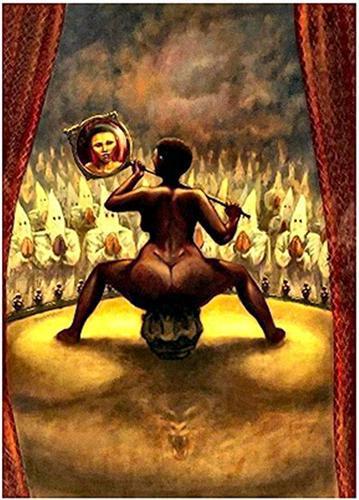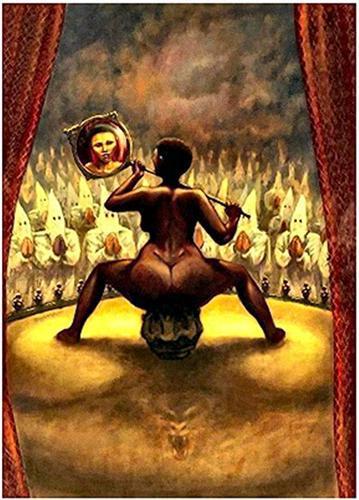I originally posted the following information and commentary onto my Facebook wall…

Saartjie Baartman
The Life and Death of Saartjie Baartman:
http://www.theguardian.com/books/2007/mar/31/featuresreviews.guardianreview12
The body of Saartjie Baartman, better known as the Hottentot Venus, has had greater influence on the iconography of the female body in European art and visual culture than any other African woman of the colonial era. Saartjie, a South African showgirl in the early 19th century, was a small, beautiful woman, with an irresistible bottom. Of a build unremarkable in an African context, to some western European eyes she was extraordinary. Today, she is celebrated as bootylicious.
Saartjie was not only the African woman most frequently represented in racially marked British and French visual culture, she also had less immediately visible influences on western art. In an age when art and science were commonly regarded as bedfellows, her image appeared in a proliferation of media, from popular to high culture. Saartjie was depicted in scientific and anatomical drawings, in playbills and aquatint posters, in cartoons, paintings and sculpture. Both during her life and after her death, caricaturists Thomas Rowlandson and George Cruikshank made her the subject of works typifying London life and the Napoleonic era. Saartjie’s body cast was one of the inspirations for Matisse’s revolutionary restructuring of the female body in The Blue Nude (1907), prompted by African sculpture and conceived, as Hugh Honour argues, “as an ‘African’ Venus: that her skin is not black is hardly of significance in view of his attitude to colour”.
Who was Saartjie Baartman? Not a question anyone will ask in South Africa, where she is a national icon; nor in America, where her life, legend and relevance are well understood. Yet in Britain, where she came to fame and had such an influence, she is less well remembered. Rumoured to be a slave brought to England against her will, Saartjie was an orphaned Khoisan maidservant born in 1789 on the eastern frontier of the Cape Colony. She was 21 years old when she was smuggled from Cape Town to London. Her employer, a free black man named Hendrik Cesars, was manservant to a British Army medical officer named Alexander Dunlop. Dunlop persuaded Cesars that Saartjie had lucrative potential as entertainment and a scientific curiosity in England, which had a thriving stage trade in human and scientific curiosities. A woman from the so-called “Hottentot tribe”, who, legend held, had amazing buttocks and strangely elongated labia, might provide an exceptional draw. Saartjie was persuaded: Dunlop, she said, had “promised to send her back rich”.
(Read entire book review here…)
My Commentary: ♫ “The more you know…” ♫









